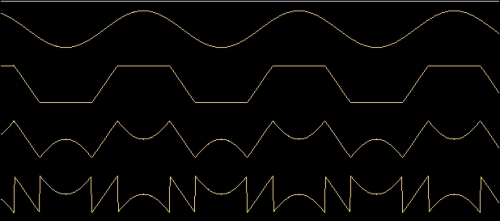Waveshaping stands for transforming a waveform with respect to some transfer function. Basic waveshaping can be performed using Clip, Fold, Wrap UGens, or their equivalent convenient methods (clip, fold and wrap, respectively):
// convenient waveshaping
{SinOsc.ar(300).clip(-0.5,0.5)}.scope; // clipping output to +-0.5
{SinOsc.ar(300).fold(-0.5,0.5)}.scope; // folding output to +-0.5
{SinOsc.ar(300).wrap(-0.5,0.5)}.scope; // wrapping output to +-0.5In the following figure, we can see how the original waveform is transformed in each case:

Only the part of the input waveform that lies outside the given bounds (± 0.5 herein) will be affected. Values within this range will remain unchanged, while values outside it will be either truncated (clip), folded back (fold), or wrapped (wrap) onto the valid range by means of a simple mathematical formulae. Waveshaping epitomizes how subtle variations in the amplitude or DC offset or the original signal may result in dramatically different...



